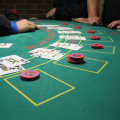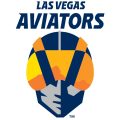Major League Baseball (MLB) is a sport rich in tradition and complexity. Understanding the rules of MLB can enhance your appreciation of the game, whether you’re a seasoned fan or a newcomer. This comprehensive guide covers all the essential rules of MLB, from the basics of gameplay to the intricacies of specific regulations.
The Basics of Baseball
The Field: The baseball field, also known as a diamond, is a 90-foot square with a pitcher’s mound in the center. The field is divided into the infield and outfield, with four bases (first, second, third, and home plate) forming the corners of the square.
Objective: The objective of the game is to score more runs than the opposing team. A run is scored when a player safely reaches home plate after touching all the bases in order.
Innings: A standard game consists of nine innings, with each inning divided into a top half (where the visiting team bats) and a bottom half (where the home team bats). Each team gets three outs per half-inning.
The Gameplay
Batting: The batting team tries to score runs by hitting the ball and running the bases. A player continues batting until they make an out or reach base safely.
Pitching: The pitcher’s goal is to prevent the batter from hitting the ball and reaching base. The pitcher throws the ball from the mound to the catcher at home plate, using a variety of pitches to outwit the batter.
Fielding: The fielding team tries to get the batting team’s players out by catching the ball, tagging runners, or forcing them out at a base.
Types of Outs
Strikeout: A batter accumulates three strikes (swinging and missing, not swinging at a ball in the strike zone, or hitting a foul ball with two strikes).
Groundout: A batter hits a ground ball, and the fielding team throws the ball to first base before the batter can reach it.
Flyout: A fielder catches a ball hit in the air before it touches the ground.
Tag Out: A fielder with the ball tags a runner who is not touching a base.
Force Out: A fielder touches a base with the ball before the runner can reach it, on a play where the runner is forced to advance.
Pitching Rules
Balk: A pitcher makes an illegal motion on the mound, allowing runners to advance one base.
Strike Zone: The area over home plate between the batter’s knees and the midpoint of their torso. A pitch in this zone is a strike if not hit.
Intentional Walk: A pitcher can intentionally walk a batter by signaling to the umpire, allowing the batter to advance to first base without pitching.
Hitting Rules
Foul Ball: A ball hit outside the field of play. It counts as a strike unless the batter already has two strikes.
Home Run: A hit that allows the batter to circle all the bases and score a run, typically by hitting the ball over the outfield fence.
Bunt: A batter lightly taps the ball, usually to advance a runner or for a hit.
Base Running Rules
Stealing: A runner advances to the next base during the pitcher’s windup or delivery.
Sliding: Runners often slide into a base to avoid being tagged out.
Tag Up: On a caught fly ball, runners must touch their current base before advancing to the next one.
Umpire Calls and Reviews
Instant Replay: Teams can challenge certain umpire calls, which are then reviewed using video replay.
Interference: An action by a player that impedes the progress of another player, resulting in a penalty.
Miscellaneous Rules
Designated Hitter (DH): In the American League, a designated hitter can bat in place of the pitcher.
Double Switch: A strategy used to change the batting order and make a pitching change simultaneously.
Ground Rules: Specific rules unique to each ballpark that come into play when the ball interacts with the field or objects in specific ways.
Understanding these rules is crucial for fully appreciating and enjoying Major League Baseball. As you watch or play the game, keep these guidelines in mind to deepen your understanding of America’s pastime.






